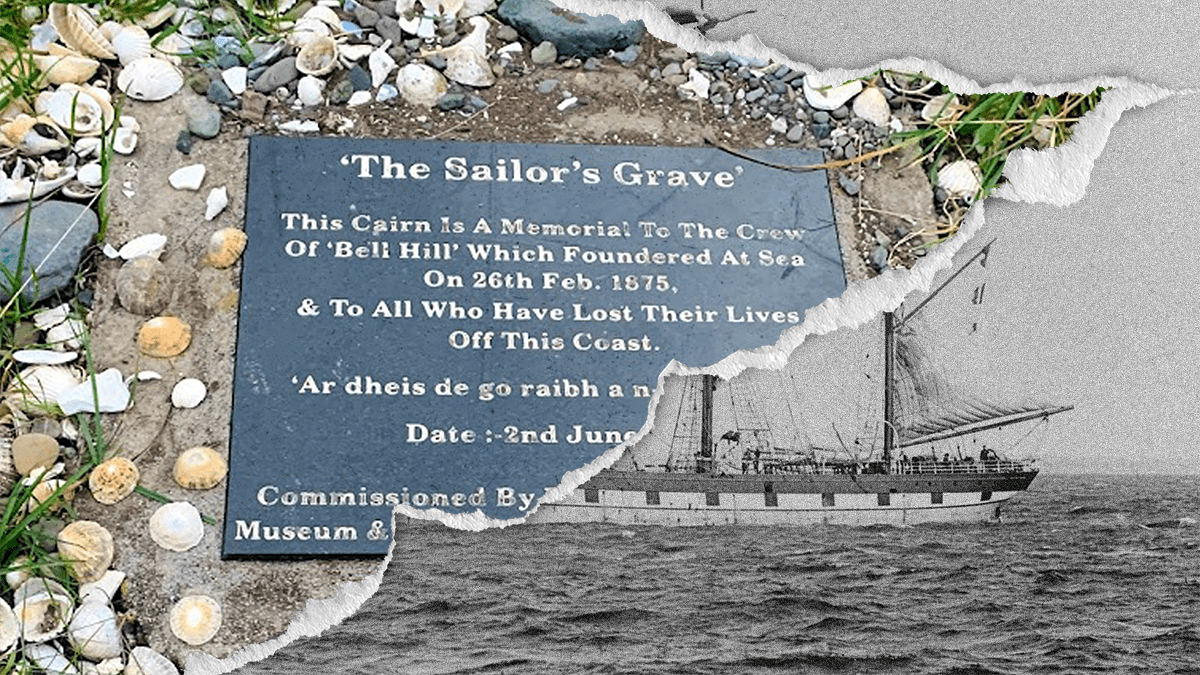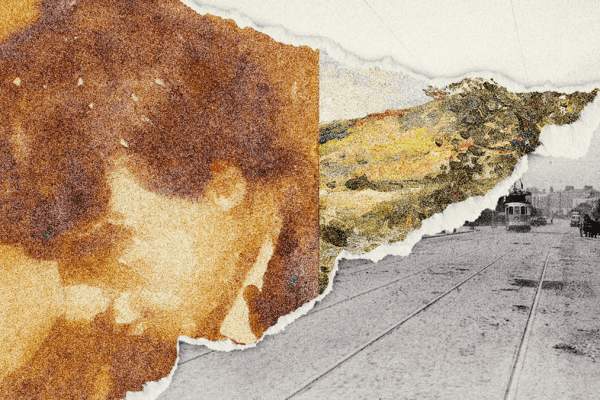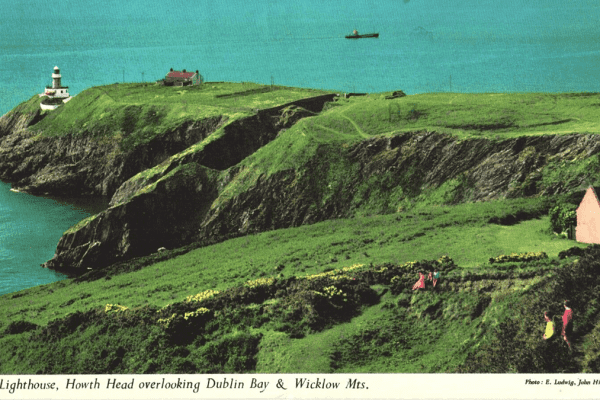Just north of Balbriggan in Bremore, overlooking the Irish Sea, lies a cairn of stones created by visitors to the site over a number of decades. Beside it is a plaque with seashells strewn around it, titled “The Sailor’s Grave”. Unveiled in 2013, it serves to commemorate the crew of the “Bell Hill” who perished in a wreck off that location on February 26th, 1875. This is the story of what happened on that fateful day.
The Bell Hill was a three-masted iron-hulled barque. She was christened on New Year’s Day 1866 by a Miss Sherwin – who lived in a now-listed house called Bell Hill in Cumberland, after which the ship was named. Built by Bowdler, Chaffer & Co. in Seacombe for ship-owners J. Walmsley & Co. of Liverpool, she weighed 500 tonnes when unladen. The ship was certified as “AA” by the Lloyd’s Register – the highest possible grade. The vessel was constructed for voyages along the western coast of the Americas, reinforced in order to carry copper ore.1
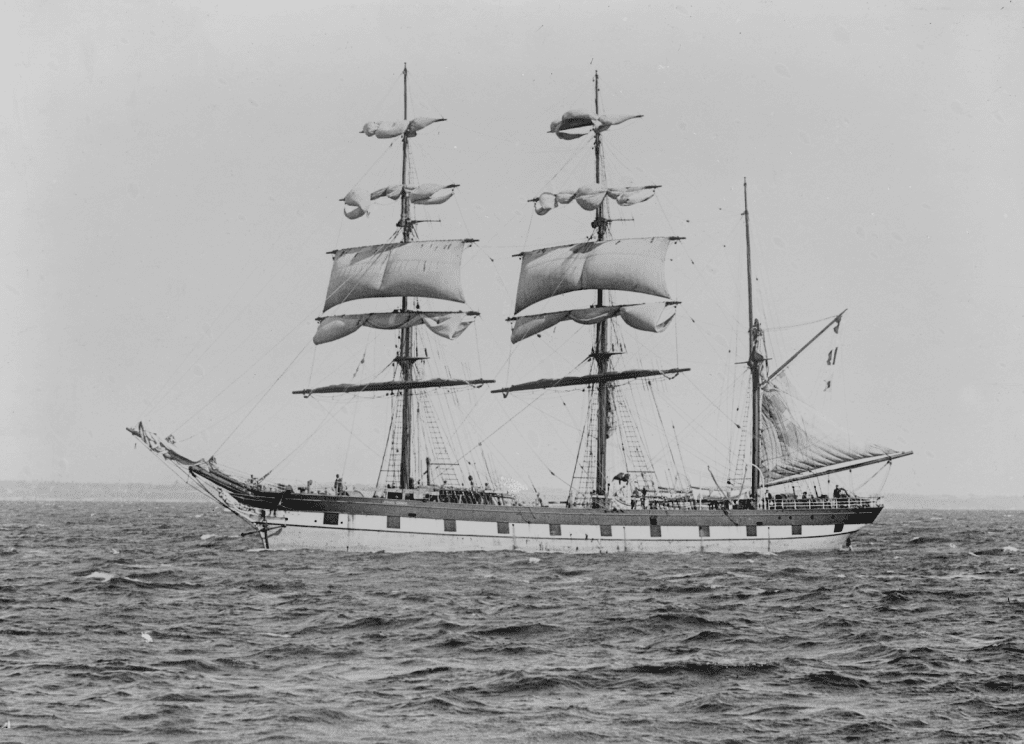
Accounts differ regarding the timing of the sequence of events on the day. But what is known is that around noon on February 25th 1875, the Bell Hill set off on a voyage to Valparaiso, Chile – one it had made numerous times before – carrying general cargo, including tea, wine, kegs of paint and iron.2 The journey seemed to be going favourably as the day passed onto the next. Suddenly, in the early hours of Friday, February 26th, a heavy gale blew, causing choppy waters as the crew sought to navigate it.3 The sails were unable to fight the wind, leaving the vessel at the mercy of the wind as it started blowing the ship off course.
At 9 a.m., the ship was sighted by the Balbriggan coastguard bearing a signal of distress.4 Though rescue efforts at this point were impossible due to the distance of the ship, so she continued to slowly drift towards land. At this moment, the situation didn’t seem very perilous to the crew. They drifted north of Balbriggan, and it was at this point that they saw the sight of a line of jagged jocks between the waves bashing over them. The crew attempted to set down an anchor, but it wouldn’t hold and instead dragged along the seafloor.5 By now, a crowd had descended on the shore to watch what was unfolding in front of them.
A rescue operation led by the coastguards was underway. They brought a rocket apparatus to the coast to provide a means of escape for the helpless crew. A shot was fired from the rocket but missed. They took a second shot, which also missed. On the third attempt, one of the crew members, James McDonnell, got a hold of the line.6
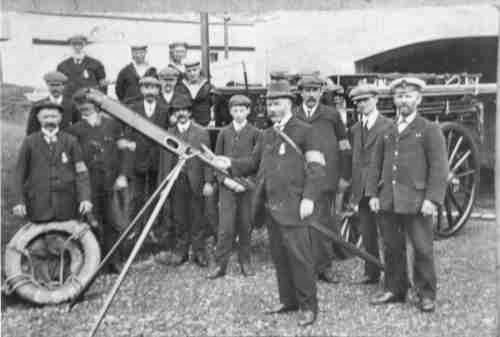
Meanwhile, a lifeboat from the Skerries coastguard was summoned, as Balbriggan lacked its own boathouse facilities. Drawn by seven horses, they rushed down towards the scene. However, the lifeboat became stuck under a bridge on its way to the beach, rendering it unable to provide assistance.7
Back on the water, James McDonnell and two other crew members managed to use the rocket lines to make their way onto a rock. Three locals went out to the rock to aid them – James Carvin, John Murphy and James Carton – before ultimately becoming stuck on the rock themselves.4 Not long after, the Bell Hill crashed broadside into the shore, splitting in half and leaving the remaining crew at risk from the perilous combination of the rough waves and jagged rocks.
Coastguard commander Francis Sullivan Delves Broughton managed to launch a small boat with some volunteers to go out to the six men stranded on the rock.7 They succeeded in getting the men off the rock, but on the way back, due to the current and weight distribution, the boat capsized. Fortunately, the tide was in their favour and people on the shore helped bring them in. James Carton, labelled “an old man” by newspapers, carried one of the crew members to land on his back.7 One of the crew members died upon reaching the beach, or in the words of one newspaper, “Ere one of them had put a foot on land and he expired”, while the other died later that day in a local hotel.6 This left James McDonnell as the only survivor.
Sources differ on how many crew were actually on board the barque – ranging from as little as 12 to as many as 24. Some newspapers at the time outlined a manifest of the crew, complete with their Liverpool addresses as follows:8
- Captain Edward Edgar – Bamber Street
- R.B. Perren, first mate – Upper Stanhope Street
- R. Rosewarne, second mate – Upper Frederick Street
- William Grant, carpenter – Frederick Street
- Charles Ward, steward – Park Street
- John Flanders, cook – Great Newton Street
- Axel Nordstrom, sailmaker and AB
- John Young AB
- William Merrick AB
- James McDonnell AB
- S.G. Gustafson AB
- J. Jefferies AB – Beaufort Street
- John Henry Harding OS
- William Lewin Killey, apprentice – aged 17
- George William Hill, apprentice – aged 16
- Thomas Nightingale Mercer, apprentice – aged 16

Along with this, the Irish Civil Death registrations and McDonnell’s account outlined two other potential crew members – William Wilson and James Thompson, who had taken refuge on the rock and were brought to land. They were listed as having died of exposure to the cold. This would bring the total crew count up to 18, although it’s difficult to authenticate the veracity of the initial manifest.

As is perhaps human nature, further speculation abounded as to the actual reason for the ship’s wreck. As opposed to being blown off course, one theory was that there was a mutiny on board in which the captain was shot and thrown overboard – leaving no one to steer the ship.9 Another is that a fight broke out on board, leaving the crew distracted whilst the ship drifted towards the Irish coast.10 None of these hypotheses, however, seem anything more than fantasy and were not mentioned at the subsequent inquest.
On February 28, 8 members of the crew were buried south of Balbriggan in Balrothery in a multidenominational cemetery. They were buried in lampblack-covered coffins made of cheap deal board, with one report stating that you could “see the light through the joints”.11 Their grave was marked with a now lichen-stained peon-topped stone (note: since the time of writing, the gravestone has been cleaned by the Balrothery Heritage Group) bearing the epitaph:
THIS STONE
IS SET UP IN SORROWFUL MEMORY
TO MARK THE GRAVES OF
EIGHT SAILORS
WHO WERE LOST AT THE WRECK OF THE
BARQUE BELL HILL NEAR BALBRIGGAN
ON THE 26TH OF FEBRUARY 1875
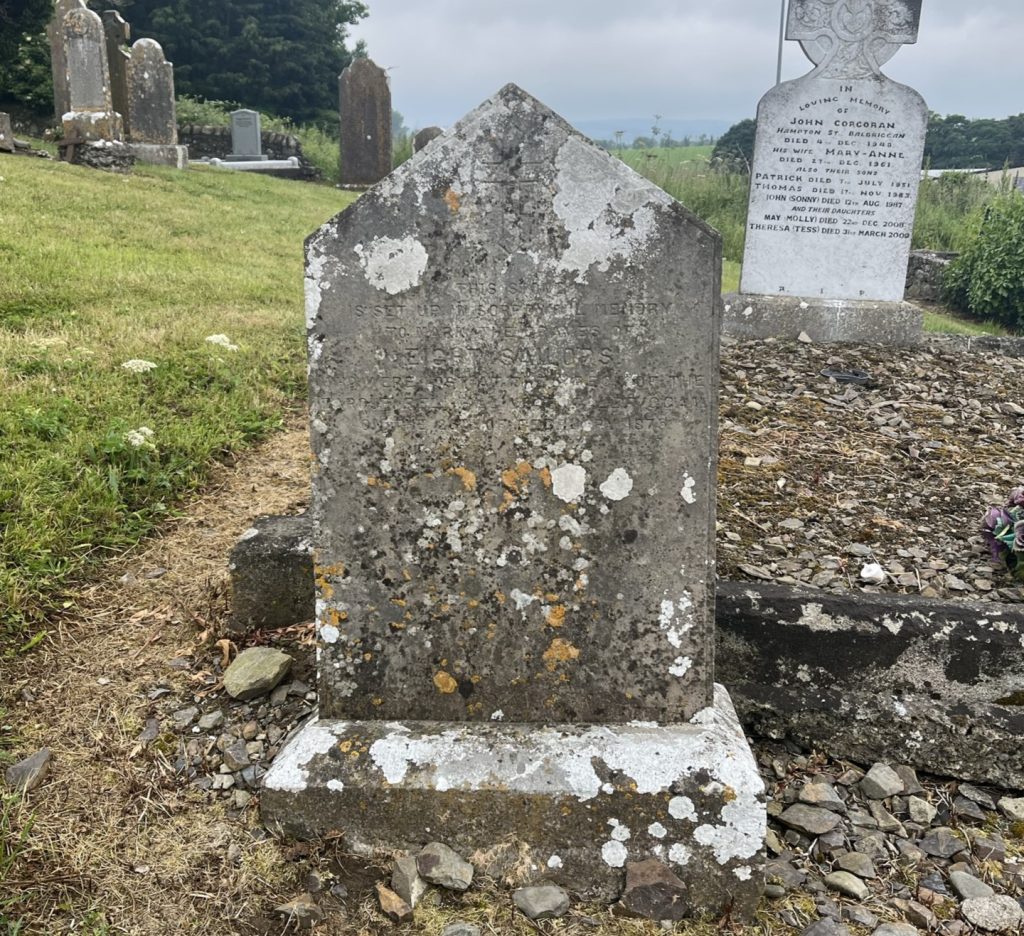
Following an order from the Board of Trade, an inquest was held at the Four Courts in Dublin on March 18 1875. The investigating committee consisted of Joseph W. O’Donnell, Chief Police Magistrate, Captain Richard Dawkins of the ship Vanguard (which was later the subject of its own inquiry after it sank in September of that year) and Captain Steele, who held the role of nautical assessor. Witnesses included various coastguard personnel before James McDonnell was brought to the stand. He gave his account of the incident but was unable to answer the question of why the ship had seemingly changed its course mid-journey – attributing the overall incident to the unfavourable weather.12
Subsequent bodies were then recovered in the weeks and months after the incident. The corpse of the steward, who, if the manifest is to be believed, is Charles Ward, was picked up in a fishing trawler net on April 15th.13 In June, the body of Captain Edward Edgar was found washed up on the Cumberland coast at Drigg.14 This was a short distance from Edgar’s birthplace and, coincidentally, around half a mile from Bell Hill house, which the ill-fated ship took its name after. A photo of his wife was found on his corpse and just over four months later, she would give birth to a daughter.15
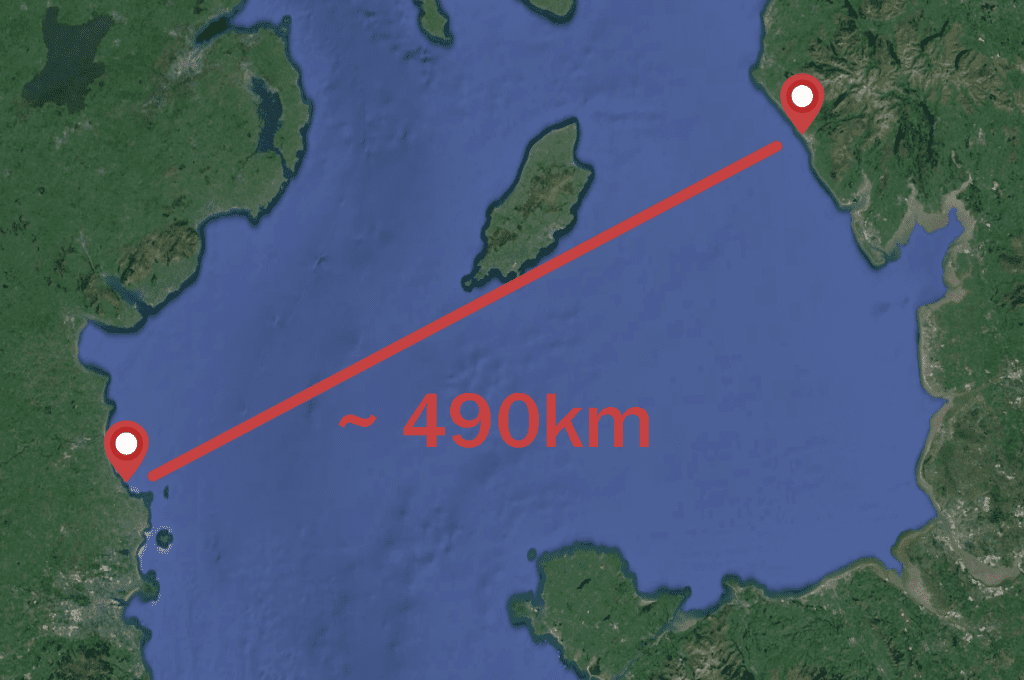
In the hours and days after the wreck, people from the local area sought to salvage what they could of the goods that washed up on the beach. This group was dubbed “The Bell Hill Robbers”.16 People removed the stolen goods they had and hid them in ditches once word got out that police had warrants to search their homes.17 Its ‘members’ brought before the Petty Court Sessions consisted of:
- Patrick Brady, Bremore
- Catherine Caffery, Balbriggan
- Anthony Carrick, Whitestown
- John Cullen, Corballis
- Thomas Derham, Skerries
- Mary Dillon, Balbriggan
- Ellen Lannin, Man of War
- Rose Lawless, Balbriggan
- Sarah Lee, Balrothery
- Patrick McBride, Balbriggan
- Patrick McGrath, Knocknagin
- Richard McLoughlin, Skerries
- James Murphy, Balgee
- William Murphy, Corballis
- Francis Peters, Balbriggan
All stood before the courts accused of stealing goods from the ship, with punishments ranging from a fine of £5 to two months imprisonment with hard labour.
Two months after the incident, rewards were given to those who had aided in the rescue of the sailors. The three fishermen who helped – John Murphy, James Carton and James Carvin – were each given £1 by the Liverpool Shipwreck and Humane Society. Captain Broughton was awarded a silver medal. Four coastguards, Thomas Woodley, John Williams, Thomas Kirby and George Conway, were each given 20 shillings for their efforts.18
In the aftermath of the Bell Hill, calls were made for Balbriggan to have its own lifeboat station to prevent a similar fate from happening to others in the event of future wrecks. A boathouse was eventually constructed in the harbour, although in its 23 years of existence, it was only ever called for twice and saved a total of zero lives – proving too little too late.7

References
- “Ship Launches at Seacombe,” The Daily Post, January 2, 1866, 7.
- Brady, Karl. Shipwreck Inventory of Ireland – Louth, Meath Dublin & Wicklow. Dublin: Stationery Office, 2008.
- “The Loss of the Ship Bell Hill and Fifteen Lives,” The Daily Post, March 6, 1875.
- “Awful Shipping Disaster.” The Drogheda Argus, March 6, 1875.
- “Shipping Disasters.” The Daily Post, March 1, 1875.
- “Wreck, With Loss of Sixteen Hands.” The Kerry Evening Post, March 3, 1875.
- De Courcy Ireland, John. Wreck and Rescue on the East Coast of Ireland. Dublin: Glendale Pr., 1983.
- “Shipping Disasters.” The Liverpool Mercury, March 1, 1875.
- “The Wreck of the Bell Hill · Balrothery · The Schools’ Collection.” Dúchas. Accessed February 21, 2024. https://www.duchas.ie/en/cbes/4498253/4383755/4506984.
- “Famous Balbriggan Shipwrecks.” The Drogheda Independent, February 9, 1952, 2.
- “The Shipwreck at Balbriggan.” The Weekly Examiner and Ulster Observer. March 6, 1875, 3.
- “The Wreck of the Belle Hill.” The Freeman’s Journal, March 19, 1875, 3.
- “Home News.” Nation, April 17, 1875, 2.
- “The Loss of the Bell Hill.” The Liverpool Mercury, June 30, 1875.
- “Births.” The Liverpool Mercury, November 9, 1875.
- Condrot, Rena, Pat Hurley, and Tom Moore. Old Tales of Fingal. Dublin: Grenville Print, 1984.
- “Julianstown Petty Sessions – Tuesday.” The Drogheda Conservative, March 27, 1875.
- “Liverpool Shipwreck and Humane Society.” The Journal of Commerce, April 3, 1875, 5.
